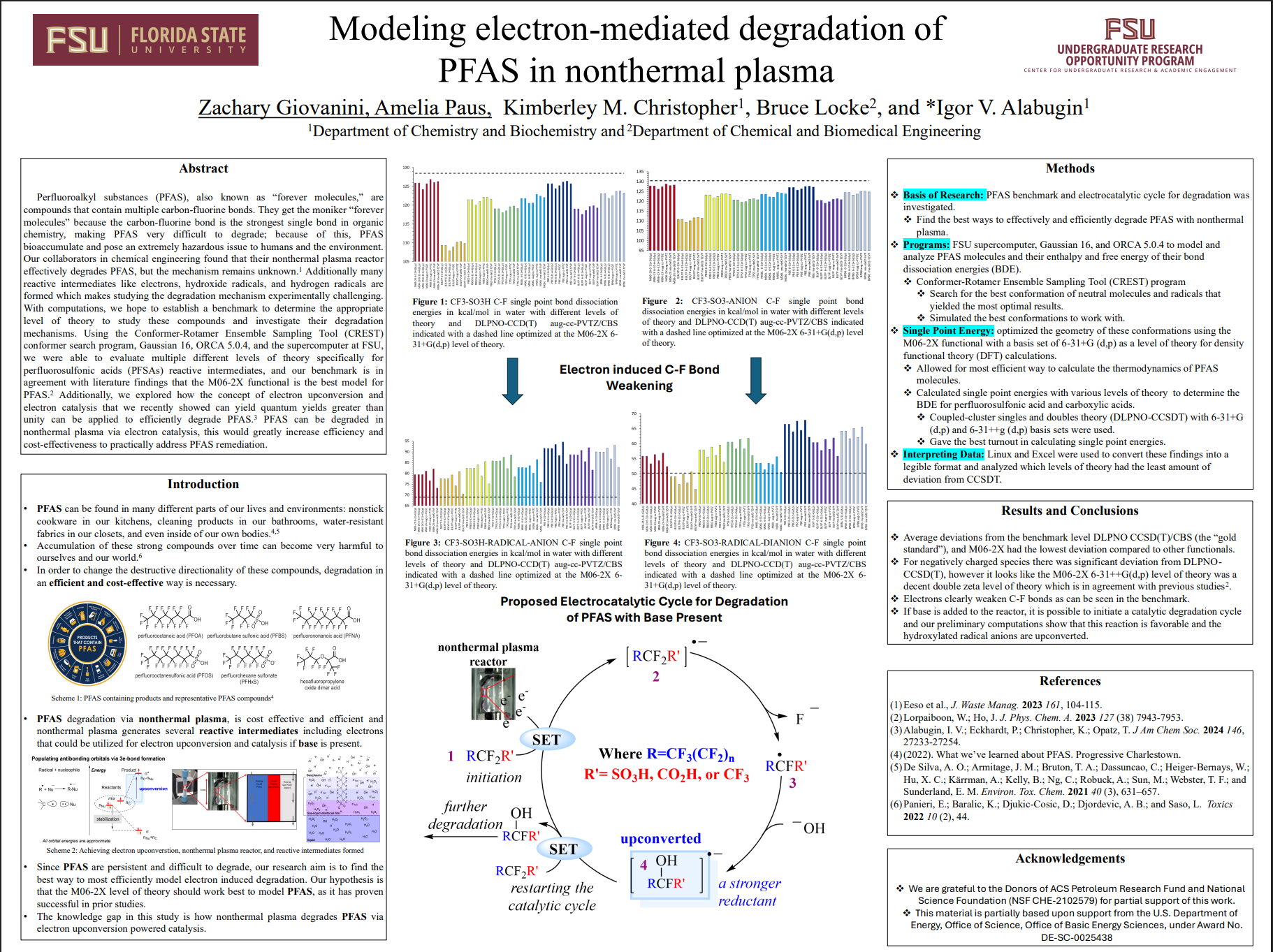Research Symposium
25th annual Undergraduate Research Symposium, April 1, 2025
Amelia Paus Poster Session 3: 1:45 pm - 2:45 pm/ Poster #29

BIO
Born and raised in New Port Richey, Florida. I have always been fascinated by the environment. My research interest lies in public health, where I explore the impact of the environment on public health situations. Currently, I am a freshman, working on my bachelors in Public Health with a minor in Environmental Science and Policy. I aspire to be a change for the world, aiming to collect and analyze data to investigate health issues. I am particularly interested in genetics and diseases, and my long-term goal is to be an epidemiologist. In addition to my academic pursuits, I enjoy cheerleading, which helps balance my research-driven life.
Modeling electron-mediated degradation of PFAS in nonthermal plasma
Authors: Amelia Paus, Kimberley M. ChristopherStudent Major: Public Health
Mentor: Kimberley M. Christopher
Mentor's Department: Department of Chemistry and Biochemistry Mentor's College: Florida State University Co-Presenters: Zachary Giovanini
Abstract
Perfluoroalkyl substances (PFAS), also known as “forever molecules,” are compounds that contain multiple carbon-fluorine bonds. They get the moniker “forever molecules” because the carbon-fluorine bond is the strongest single bond in organic chemistry, making PFAS very difficult to degrade; because of this, PFAS bioaccumulate and pose an extremely hazardous issue to humans and the environment. Our collaborators in chemical engineering found that their nonthermal plasma reactor effectively degrades PFAS, but the mechanism remains unknown. Additionally many reactive intermediates like electrons, hydroxide radicals, and hydrogen radicals are formed which makes studying the degradation mechanism experimentally challenging. With computations, we hope to establish a benchmark to determine the appropriate level of theory to study these compounds and investigate their degradation mechanisms. Using the Conformer-Rotamer Ensemble Sampling Tool (CREST) conformer search program, Gaussian 16, ORCA 5.0.4, and the supercomputer at FSU, we were able to evaluate multiple different levels of theory specifically for perfluorosulfonic acids (PFSAs) reactive intermediates, and our benchmark is in agreement with literature findings that the M06-2X functional is the best model for PFAS. Additionally, we explored how the concept of electron upconversion and electron catalysis that we recently showed can yield quantum yields greater than unity can be applied to efficiently degrade PFAS. PFAS can be degraded in nonthermal plasma via electron catalysis, this would greatly increase efficiency and cost-effectiveness to practically address PFAS remediation.
Keywords: Perfluoroalkyl substances (PFAS), Carbon-Fluorine bonds, Gaussian 16, organic chemistry, chemical engineering


